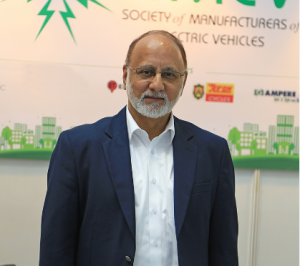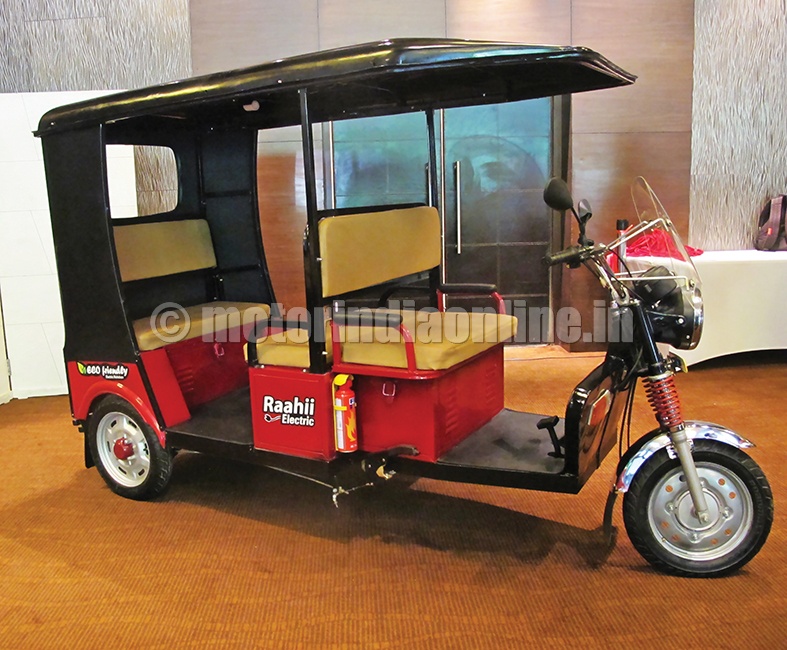A CNG/petrol-fired autorickshaw owner would never consider switching over to an electrically-driven rickshaw, and someone pedalling a manual rickshaw would think thrice before upgrading to such a product. But there are some companies which are motivating these drivers to switch over to e-rickshaws which will not only result in cutting down the latter’s unwanted expenses like fuel, etc., but will also enhance their earnings manifold. Moreover, many small-time traders like vegetable vendors are also embracing this concept.
In an exclusive interaction with MOTORINDIA, Mr. Sohinder Gill, CEO (Global Business), Hero Electric, and Director, Corporate Affairs, Society of Manufacturers of Electric Vehicles (SMEV), stated that by propagating the concept of zero-emission three-wheelers, they are not only protecting the environment but also making a difference to the society at large.
Edited excerpts:
You have been with Hero Electric for nearly a decade now. How has the overall industry evolved over these years?
It’s been seven years I am associated with the EV industry. In the initial phase, there was a deluge of electric vehicles in the country due to certain excitement surrounding it. Nearly 60,000-70,000 e-vehicles were already on the roads due to its ultra-cheap price tag. Later on, sales started dropping considerably as there was no support from the Government on infrastructure, incentives, etc. Moreover, there were many fly-by-night operators (selling sub-standard products) who just shuttered their outlets. Whatever was sold in the initial phase created a negative word of mouth because of battery and other issues. Since we came at a difficult phase, rather than selling we started strategising on how to come out of this (tricky situation) as a category. This is because we thought that unless we become a category winner, we won’t be able to come out as an industry winner. So, focussing on organisational growth and category growth became my long-term objective. That’s why I started an association called the Society of Manufacturers of Electric Vehicles (SMEV). So I managed to garner at least 14 companies who were serious about this industry and therefore shifted out unorganised players. So we have been lobbying with the Government for support to our industry for a few years, so that there are at least half-a-million zero-emission vehicles on the country’s roads.

How has the business been last year and what about the outlook for this year?
The only thing which we did well was we survived this holocaust all these years when all of them perished. We are one of the few players who are still soldiering on with conservation of resources. Secondly, we also maintained our market leadership position as we remain the market leader in the (two-wheeler) e-vehicle segment all these seven years. Overall the industry sold 16,000 units per annum, and we were able to clock around 9,000 units per annum.
Very recently Finance Minister Arun Jaitley earmarked Rs. 75 crores for Faster Adoption and Manufacturing of Hybrid and Electric vehicles (FAME) in 2015-16. How much of a thrust do such steps give to the industry?
The allocation towards promoting electric vehicles and supporting charging infrastructure and R&D investments is a welcome step. It’s like a life saver for the ailing companies that had invested into the environmentally-friendly vehicles but were bleeding heavily because of the lack of Government support. The previous UPA Government had launched the ‘National Electric Mobility Mission Plan (NEMMP) 2020’ two year back and the targets were envisaged to result in substantial lowering of vehicular emissions and decrease in carbon dioxide emissions by 1.3%-1.5% t in 2020 as compared to the current scenario. In addition to supporting the industry, such measures will create a significant and positive impact on the health index of the country by promoting zero pollution electric vehicles and reducing dependence on the fossil fuel.
The biggest beneficiaries (of NEMMP) will be companies manufacturing electric two-wheelers and small electric cars that have managed to survive through the difficult years and have been still active in the market. Although we are awaiting details, it is expected that around Rs. 1,000 crores will be allocated for a period of two years, a large part of which will go directly into the hands of customers in terms of reduction of prices of electric vehicles by around 20 per cent and installing charging stations in many cities.
You were mostly in the two-wheeler segment. What motivated you to diversify into the three-wheeler segment?
We were always looking at alternate options. The launch was primarily driven by a bottom-line-driven approach. We have already declared that we will never get into electric cars. So, besides two-wheelers, we will be into two-wheelers and speciality vehicles. When we saw these (sub-standard) e-rickshaws plying on the streets, we were much worried about the image of our industry. Not only they were cheap quality sub-standard vehicles, they were unsafe contraptions. The brakes were out of order after two months and the suspension oil leaked out. They were overloading and axles were braking. Had they been allowed to ply on roads, they would have spoilt the Indian transportation scene. We thought it would meet a similar fate like two-wheelers. So, thankfully, we had a good understanding with the Government, and urged them to create some of a certification and discipline process for public transportation in terms of e-rickshaw, which is a beautiful device. To put it the other way, it is a perfect solution for sustainable urban mobility provided it is handled properly. I am confident that there will be more e-ricks on Indian roads, especially in B-Class cities than any other public transport in five years’ time. We will also be exporting to neighbouring countries like Nepal, Bhutan, Burma, Sri Lanka, etc.
Are you confident that the recently-launched ‘Raahi’ will create a benchmark in the e-rickshaw industry?
Yes, definitely. We already have 300 dealers who have expressed interest in selling the three-wheelers too. Although we have separate norms for three-wheelers and they need be sold at a separate showroom, their (our dealers’) knowledge base of servicing electrically-operated vehicles exists. Their spare parts’ management is an added advantage. At least 30% of our dealers are looking at a space next door or somewhere where they can open a Hero Electric outlet for e-ricks. Even though this product will not revolutionize the e-vehicle industry, it will fill a lot of white space between a manually-driven rickshaw and a CNG/diesel-run autorickshaw. Furthermore, we will be rolling out more e-ricks with a different look and feel next year.
What has been the response to ‘Raahi’ and what are its key USPs?
This product is an entry point and we are not going to remain at this design or this type of a contraption. But because the standards (for e-ricks) are not fully evolved, they have been based on the existing set of Chinese products. So the Government is not yet comfortable at big design changes. That is why we have launched a very similar looking and differently performing product in a single variant. There are only ten changes on the outer part of the vehicle. But there are around 30 changes in the innards of the vehicle. That is why our e-rick, in terms of performance, durability, reliability, comfort, etc., is hugely different from the market but priced only 10 pc more than low-quality ones. So our intention is not to make huge money or garner huge numbers but ensure that the market accepts good quality products sold under our stable.
Going forward, we will be having other designs (for such products) also. Moreover, there are 28 key attributes which we have announced at the press conference like electronic locking, overloading and underloading controls, remote mobile charging, seat thickness, buzzers and more legroom, among others. It is nearly 75 per cent localised with some electric motors and controllers imported From China and Taiwan. We are targeting a specifically new set of people who are either unemployed or heavily underemployed (like small traders). These are people who will now have the fancy of being businessmen. Moreover, banks are going to offer easy term loans for it, and we are also helping them.
Lastly, what do you think will be the outlook for the e-vehicle industry in India?
The Government has an ambitious target of putting 5 million electric and hybrid vehicles per year on the road by 2020 under the NEMMP programme. It was estimated that the Government would need to provide support to the tune of Rs. 13,000-14,000 crores over a period of 5-6 years to facilitate R&D and put in place a world-class charging infrastructure. We are already seeing the green shoots as there was a slight uptick in sales during April.
